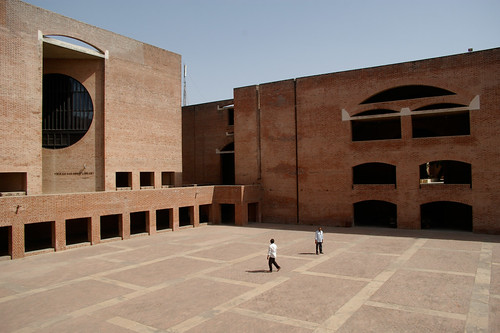July 14, 2010
by Gaurav Rastogi
As many of you know, I am working with Basab Pradhan on a book on Offshore Services. We’re offering an insider’s view into the industry, and explaining the workings of the industry as part of the book. In a recent post, Basab talks about the quest for higher bill rates, which is one in a series of recent posts leading up to the book.
The book is due out early next year.
Well, earnings season is upon us, and all the IT Services and BPO companies will be unveiling Q1 (of the Indian financial year) results this entire month. The financial markets are waiting with bated breath- this quarter will be a sign of how the rest of the year will turn out.
Many within and outside the industry have asked the question: Has competition and commoditization increased in the offshore services space, now that there are several large Indian IT Services companies? Competitive differentiation continues to be challenging, and companies are yet to evolve completely new ways of competing with each other. As of today, however, the investor presentations from the large companies seem mutually inter-changeable. The strategies look similar, and in fact, the sections on “competitive differentiators” read like they were minted in the same PowerPoint mill. Check out example one (page 10), and example two (full document).You’ll see a notable exclusion in the links, but you can Google the investor presentations from *all* the other major companies (!). They all say the same thing.
Reminds me of the famous “It’s different!” ad campaign for a ketchup brand in India…no one would say exactly “what” was different, but just repeat that “it’s different”. Same thing here, I suppose. “We’re a different kind of IT Services company”.
So, Is the party over for offshore companies? You’ll, of course, have to read the book to find out. But here, for this post, let me offer an analogy.
I was in Alaska on vacation a couple of weeks earlier, and the local tourist outfits were preparing for salmon-season. You can look it up online, but basically salmon like to lay their eggs in the exact same spot that they were born in. Every year, in July, the salmon start returning back to their source streams to lay eggs. When the season is in full swing, the streams are full of red colored salmon “climbing up” the stream, trying to find their way back to their original birthplace. At it’s peak, salmon can be seen jumping all around the streams in Alaska. Brown bears come down to fish during this season. Given the plentiful jumping salmon all around, the brown bear have to do nothing additionally in order to be successful at fishing. All they have to do is (1) stay in the stream, (2) keep their mouth open, and (3) wait for the salmon to drop into their mouth. It’s that simple. Here’s a great photo series that tells the story.
In many ways, the Indian IT Services companies have been the beneficiary of an offshore mega-trend. Over the last 10 years, offshore has moved from being a peripheral activity, performed by the trend’s “early adopters”, to being center-stage, when everybody is doing it. All large companies have had to respond to the pressure to offshore. Companies that were initially reluctant to join this rush to offshore, 10 years ago, ended up being influenced by the positive examples of companies who had offshored and reaped the benefits of cost reduction and assured delivery. A cascade effect was set into motion, as each new convert to offshoring influenced many others to join in, and so on. To be successful in this business, the large offshore IT Services companies merely had to (1) be in the market, and (2) have a willingness to sign deals, and (3) wait for the deals to flow in.The cost of sales for these companies is at its historical low, while the margins are still near their historical peak. It’s logical- Why invest more in a sales force when the mega-trend is in your favor? The results have been no surprise: Other than one US based offshore company, all the other companies have grown within the same range, and have each stated similar “breakthrough strategies” all the while.
Is salmon-season over for the big bears of IT services? The results coming out this month will tell us if the big bears have learnt new hunting tricks. Or, are they still standing in the stream with their mouth open?
Photo credit: Peter Roundie on Flickr.

 The WashingtonPost had a great online article about how electronic items track on their way from gee-wiz to junk. The infographic shows clearly how fads start, stall, decay and die! Added bonus is the story of Moore’s law at work in terms of falling prices of items as volume ramps up.
The WashingtonPost had a great online article about how electronic items track on their way from gee-wiz to junk. The infographic shows clearly how fads start, stall, decay and die! Added bonus is the story of Moore’s law at work in terms of falling prices of items as volume ramps up.


![[GRADS]](https://i0.wp.com/sg.wsj.net/public/resources/images/NA-BD764A_GRADS_NS_20100126182413.gif)




Comments